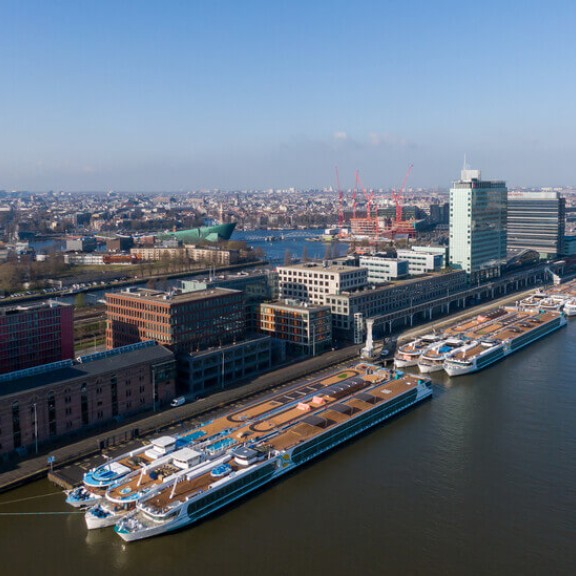
Higher turnover for Port of Amsterdam in 2015
Port of Amsterdam (Havenbedrijf Amsterdam NV) realised a turnover of € 147.4 million in 2015. An increase of 3.5% compared to 2014. The net result for 2015 came to € 52.6 million. These and other key figures are stated in the annual report published today.
The most important source of income for Port of Amsterdam comes from seaport and inland port dues (which ships pay when calling in a port) and the leasing of sites. The increase in turnover is largely attributable to the slightly increasing transhipment of oil products and the increase in sea and river cruises.
The Amsterdam port area continued to develop existing and new markets in 2015. For example, Port of Amsterdam purchased a terminal and immediately leased it out as the new location of over 37,000 m² for storage and transhipment of agricultural products such as soya and maize. A fashion-related company also established its headquarters in the Minerva port. And the owner of a 1,400-tonne crane vessel chose Amsterdam as its new home port for maintenance work.
2015 also saw a number of special milestones: the nautical spectacle ‘SAIL Amsterdam’, a contract being awarded for the construction of the largest sea lock in the world in IJmuiden, and the achievement of concrete results in the area of quality of life projects.
Shipping in 2015
The number of seagoing vessels calling at any of the ports in the port region (Velsen, Beverwijk, Zaandam and Amsterdam) was 7,162 in 2015, compared to 7,486 in 2014. The cruise market did well. The Amsterdam port region welcomed 182 sea cruise ships and 1,769 river cruise ships in 2015. This is 13 and 84 more than in 2014, respectively. Revenue for the city and region from cruises is approximately € 90 million per year. This revenue is from, among other things, the overnight stays of guests before or after their cruise, catering expenses and retail spending.
Transhipment
Transhipment declined in 2015 for the first time in years and came to 96.5 million tonnes for all ports in the port area (-1.3% compared to 2014). Transhipment in the Port of Amsterdam fell by 1.6% to 78.4 million tonnes (compared to 79.8 million tonnes in 2014). The decrease in Amsterdam is mainly due to lower throughput in dry bulk goods.
2015: from vision to strategy
As described in ‘Visie2030’, there is room for sustainable enterprise in the Port of Amsterdam. Our 2015 Annual Report lists various projects which contributed to the realisation of this vision last year. ‘From vision to strategy: roadmap for the Amsterdam Metropolitan Port’ is in fact the connecting theme of this annual report.
Dertje Meijer, Chief Executive Officer of Port of Amsterdam: ‘Our focus is on a future that looks fundamentally different from the reality of today. We believe that the access provided by a port (to the city, the people and the world) can always be faster, smarter and cleaner. By ensuring that all of our considerations, choices and projects are focused on this, we will be able to build the metropolitan port that will interconnect the port, city and region in 2030. Thus, we remain a key driver of the economy in the Amsterdam metropolitan area.’
2015 dividend
In accordance with the existing agreements, Port of Amsterdam proposes to the Municipality of Amsterdam (which has a 100% stake in Port of Amsterdam) to distribute a dividend of € 50 million for 2015. This is the same as in 2014.
Outlook for 2016
Preparations for the big, new sea lock in IJmuiden are in full swing and actual construction is starting this summer. The new sea lock will give a significant boost to the accessibility of the port region, while creating the potential for further growth.
Another development affecting financial results is that Dutch port authorities will have to start paying corporation tax from 1 January 2017. The consequences of this are being intensively discussed with other port operators, the Ministry and the Municipality of Amsterdam.
Download the 2015 Annual Report (in Dutch)